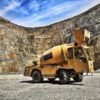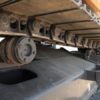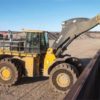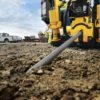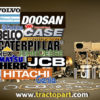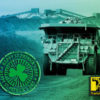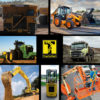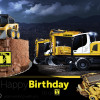Beginners Guide to Forklifts

Choosing the right forklift for your application can make all the difference in your level of productivity. Many factors should be considered before choosing a forklift. Use the information below as a quick guide or introduction to the forklift industry:
Forklifts are classified by the Industrial Truck Association (ITA) as:
- Class 1: Electric Motor Rider Forklifts
- Used primarily indoors or loading and unloading trucks
- Class 2: Electric-Motor Narrow-Aisle Forklifts
- Used for racking applications to put away and pull product from storage.
- Class 3: Pallet Jacks
- Electric or hand-powered pallet jacks are primarily used for loading and unloading trailers and for short horizontal material handling.
- Class 4: Internal Combustion (IC) Engine Forklifts (Cushion Tires)
- Traditional forklifts powered by either liquid propane gas(LPG), compressed natural gas (CNG) or gasoline and used primarily indoors
- Class 5: Internal Combustion (IC) Engine Forklifts (Pneumatic Tires)
- Traditional forklifts powered by either liquid propane gas (LPG), compressed natural gas (CNG), gasoline or diesel fuel and used primarily outdoors
Choose IC or Electric:
- Decide whether an internal combustion forklift or electric forklift is appropriate for your application.
- Internal Combustion Forklifts
- Operate on gasoline, diesel, compressed natural gas or liquid propane gas
- Primarily used outdoors, but can be used in moderation in some indoor applications
- Can operate in various conditions
- No batteries to recharge
- Toyota’s IC forklift line can lift over 51,000 lbs.
- Lifespan depends on application, use and maintenance
- Noise emissions meet or exceed ANSI B56.1 Standards
- Toyota forklifts are designed to meet EPA Standards for emissions
- Electric
- Typically less maintenance than I/C forklifts
- Quieter with little emission sounds
- No fuel-storage requirements
- Requires a charging station
- Batteries are large and heavy to change out. Battery extraction equipment may be required
- No tailpipe emissions
- Lifespan depends on application, use and maintenance
- Better option for smaller, confined areas
- Load capacity limited to 3,000 to 12,000 lb. capacity
- Internal Combustion Forklifts
Determine Use of Forklift:
- Application:
- Do you need to stack?
- Is it an indoor or outdoor application?
- What material is being moved?
- How much does a typical load weigh?
- What is the maximum racking height?
- What is your aisle width?
- Environment:
- Freezer
- Ambient
- Hot
- Extreme weather (for outdoor applications)
- Dusty/dirty
- Loud
Types of Forklifts:
- Counterbalance Sit-Down Forklift –Typical forklift for indoor and outdoor use
- Reach Truck – Narrow aisle application designed for pallet storage. Forks move vertically and horizontally.
- Pallet Jack– Also referred to as “walkies.” Operators walk behind or along side the truck as loads are moved. Often used for maneuvering loads in tight areas.
- Walkie Riders– The operator stands on a small platform. Used for moving loads over a longer horizontal distances.
- Stand–Up Counterbalance Forklift– Similar to a traditional counterbalance sit-down forklift, but rather than sitting on a seat, the operator stands on a platform. Stand-Up Riders are common for frequent on and off truck usage and they are also useful in narrow aisles.
- Tow Tractor– Used for towing products / carts. More commonly found in manufacturing facilities and at airports.
- Order Picker –Loads are small and both load and operator are lifted up with the mast. Typically used to pick product from racking in a narrow aisle environment.
Other Considerations:
- What capacity do you need? Toyota forklifts range from 3,000 lbs. to 51,000 lbs.
- What is your maximum lift height?
- Frequency of use. Will you use the forklift a few hours a day or during the entire day more than one shift?
- Environmental considerations: UL rating required, cold storage conditions, rust proof specifications, etc.
Source: http://www.toyotaforklift.com/solutions/beginners-forklift-information-guide/
